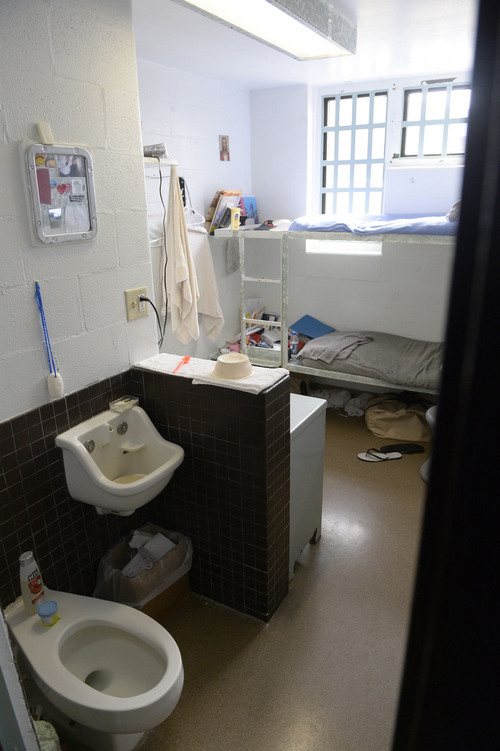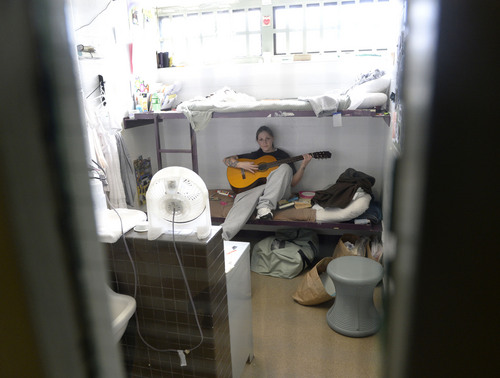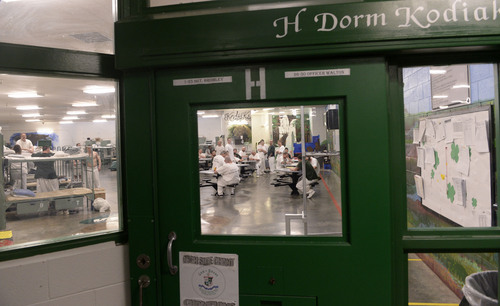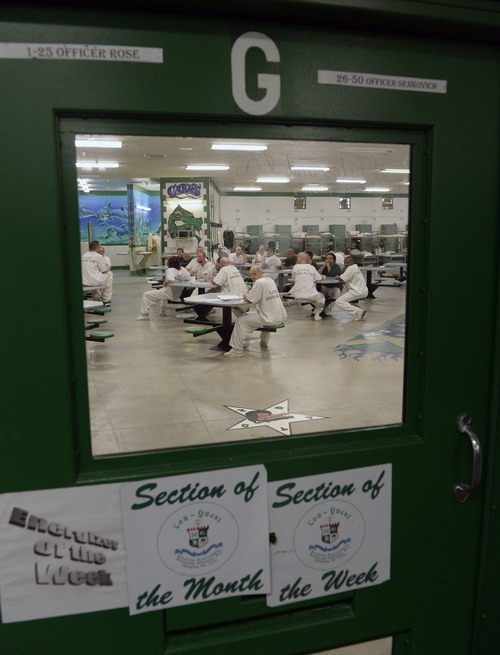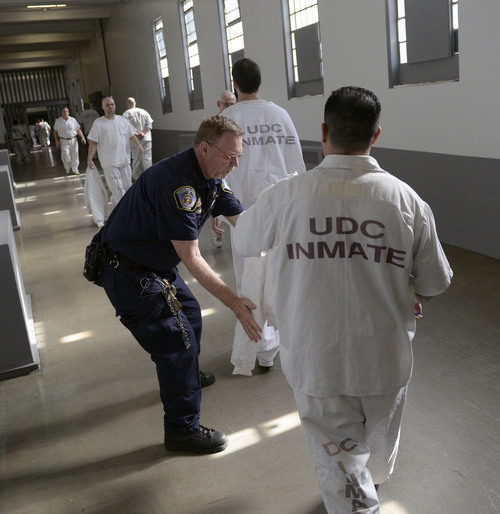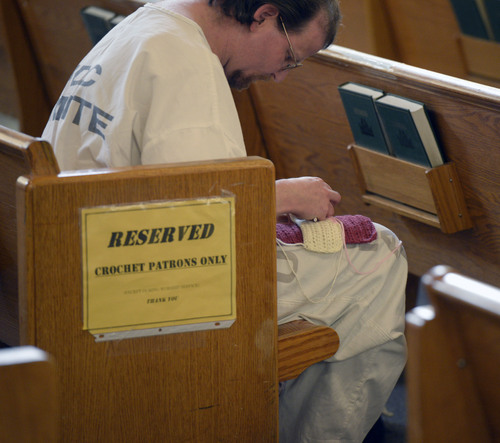This is an archived article that was published on sltrib.com in 2014, and information in the article may be outdated. It is provided only for personal research purposes and may not be reprinted.
Even in the most sterile environments, connection matters.
I was reminded of that over and over on Wednesday during a half-day media tour of the Utah State Prison in Draper.
At Wasatch A-East, that thought was spurred by seeing family photos and a hand-lettered "I love you" sign plastered on the wall of a single-man cell.
It came to mind again when a 41-year-old man said life on the unit wasn't too bad and that his family kept him going. I asked him how long he had, and the man said he's never getting out.
His first parole hearing is in 2042.
At the Oquirrh Chapel, I thought about the thin threads again. That's where volunteer Nancy Webster was working with inmates who participate in the crochet project, making blankets and other items that end up in the hands of local nonprofits and hospitals but also as far away as a women's shelter in Uganda.
Nancy said the inmates make 30 to 60 blankets a month using donated yarn. Some spend eight hours a day crocheting, she said.
"They get really excited to think about somebody getting this stuff," Nancy said.
She ended up at the prison after a public school career because "I needed something positive to do, something more rewarding than a financial reward."
"I really care about them as human beings," Nancy added.
Mary Crawford, manager of the Davis Applied Technology Center program at the prison, made me think about what binds us together, too, as she described how the program tries to adapt to changing needs of employers so that inmates have a shot at jobs when released.
I was haunted by the thought of the importance of human connection as I walked around the horseshoe at Oquirrh 1, a medium-security unit that takes a lot of "washouts" from other programs at the prison.
I don't know who he is or why this is so, but the man in cell #210 is on punitive isolation. He has no telephone or commissary privileges. He is allowed out of his cell three times a week for 15 minutes. And he's been on that status for quite some time.
Most of the inmates pressed their faces against the narrow windows in their cell doors to get as good a look at us as we were getting of them.
Not the guy in #210. No face appeared at the window, and his cell was dark.
Connection.
At the ExCell substance abuse unit at the Timpanogos Women's Facility, it's something you see everywhere — family photos in the cells, greeting cards taped to door jambs, inspirational messages painted on the walls.
It's there, too, at Promontory, where men working through substance abuse issues live in dormitory-style units as part of the ConQuest program. Each of the eight units has a theme that ties the men together, such as Eagle, Gator, Griffin, Kodiak.
They are themes that unite, strengthen and give courage as the men figure out, alone but also with each other's help, how to get out of this place and never come back.
— Brooke Adams



